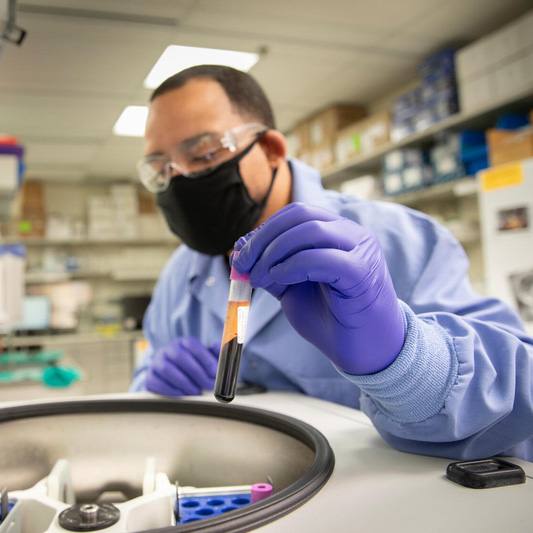-
Discovery Science
New Alzheimer’s gene pathway discovered
It’s a devastating and intriguing disease. It can ravage a brilliant mind while family, friends and caregivers hang on to hope—with desperation for a cure. Alzheimer’s disease will victimize 16 million people in the U.S. by 2050, as researchers continue to prod forward with finding new ways to prevent, target and battle this insidious warrior. A research team on Mayo Clinic’s Florida campus may be one step closer. They’ve discovered a new gene pathway that influences the risk of Alzheimer’s and increases the risk of stroke in some patients with the disease. The discovery is published in the Proceedings of the National Academy of Sciences (PNAS).

Researchers have known that pathological changes involving amyloid plaques (hard substances that form from accumulated protein fragments) and neurofibrillary tangles (abnormal clumps of a protein called tau found inside neurons) occur in the brains of people with Alzheimer’s; however, a third pathology occurs in the majority of cases: amyloid accumulation in the blood vessels of the brain, known as cerebral amyloid angiopathy (CAA). This can lead to severe strokes in some people with the disease.
“We found that the Clusterin (CLU) gene dictates whether amyloid accumulates in the parenchyma, the functional tissue in the brain, versus the vasculature, or blood vessels,” says the study’s senior investigator John D. Fryer, Ph.D., associate professor in the department of neuroscience at Mayo Clinic’s Florida campus and assistant dean of the Mayo Clinic Graduate School of Biomedical Sciences. “The CLU gene is one of many that scientists have discovered cause increased risk of developing Alzheimer’s, but it’s been unclear exactly how the gene influences risk. We may have a better picture.”
Dr. Fryer’s team used a mouse model of Alzheimer’s disease to conduct their study. The model utilized amyloid mostly in the form of parenchymal plaques, but also a small amount of CAA. When researchers deleted the CLU gene in this model, the result was striking.
“That first moment when we were looking at the slides under the microscope, I was astounded by the magnitude of the effect because virtually all of the amyloid was in the vessels with very few parenchymal plaques,” says lead author Aleksandra “Ola” Wojtas, a third-year graduate student in the Neurobiology of Disease program at the Mayo Clinic Graduate School of Biomedical Sciences on the Florida campus. “My next thought was that we still had a lot of work to do to figure out why this was happening.”
The Mayo researchers also found that inflammation in the brain associated with Alzheimer’s disease was greatly reduced in mice lacking CLU. Also notable was the finding that although the Alzheimer’s mice lacking CLU had substantially more CAA, they actually had significantly less hemorrhage. This suggests, according to Dr. Fryer, that the amyloid that accumulates in the vessels is somehow not as toxic in the absence of CLU.
Further research in the lab will manipulate CLU levels at different stages of pathology to determine if similar effects are seen—an important next step in understanding CLU as a therapeutic target. The answers found in this Discovery phase could serve as an important element in transforming the practice of medicine—a hallmark of Mayo’s model of research.
This study is funded by the Mayo Foundation, GHR Foundation, Gerstner Family Career Development Award in Individualized Medicine, Mayo Clinic Robert and Clarice Smith and Abigail Van Buren Alzheimer’s Disease Research Program, Mayo Clinic Program on Synaptic Biology and Memory, Ed and Ethel Moore Alzheimer’s Disease Research Program of Florida Department of Health, the Gilmer Family Foundation, and the National Institutes of Health.







